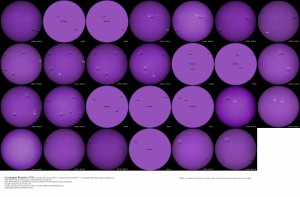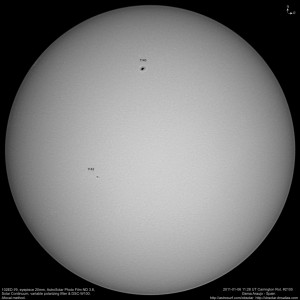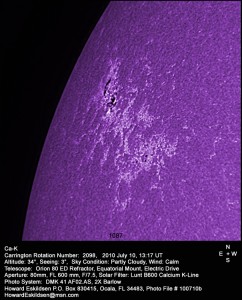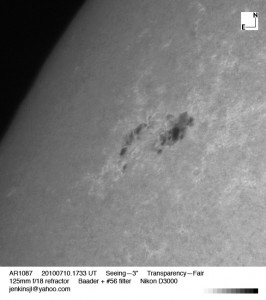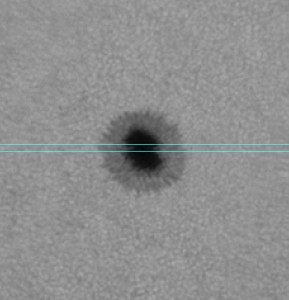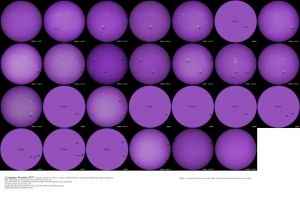August 6, 2011
Sunspot Summary Carington Rotation 2103
Start date: 2010/10/30, 10:01 UT End date: 2010/11/26, 17:23 UT
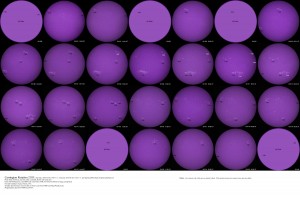
Carrington Rotation CR2013
Notes:
On the first day of the rotation large AR 1117 was preparing to exit the NW limb, while brand new AR 1120 appeared on the NE limb. This was followed by AR 1121, the return of prior AR 1112, and though it had small spots, it had a large, active plage. Other small spots followed, and on 101110, AR 1124 appeared in a new plage on the NE quadrant and gradually enlarged with prominent leading as well as following spots. The remainder of the rotation the sun had a few scattered spots withlittle magnetic activity.
Dates below expressed as yymmdd (Universal Date)
Sunspot Location Date Date
Number First Seen Appeared Last seen Comments
1117 NE Limb ***** 101101 Large spot group from prior rotation
1120 NE Limb 101030 101107 Spot in compact plage rotated into view. Small spots spread over large consolidated plage as it crossed the Sun. Spots faded from view on NW quadrant, but large, distinct plage remained.
1121 SE Limb 101105 101110 Return of AR 1112, still flaring per SpaceWeather.com. Gradually
decreased in size and faded from view, large plage persisted.
1122 N Hemisphere 101106 101110 New spot group appeared in new compact plage. Gradually faded.
1123 SE Quadrant 101110 101115 Appeared in new plage just east of AR 1121. Enlarged for at time and then faded away.
1124 NE Quadrant 101110 101119 Plage visible the day before. Gradually enlarged and developed large leading and following spots. Rotation carried from view
1125 NE Quadrant 101113 101115 Appeared in new plage that had been visible for the two prior days. just northeast of AR 1124. Was not visible in my image on 101113, but NOAA noted it later on 101113. Enlarged slightly, then faded from view.
1126 SE Limb 101112 101121 Rotated into view and was visible on my image before 1125, but it was. labeled AR 1126, presumably since both were visible later in the sameday. Gradually faded from view.
Pore NE Quadrant 101115 101115 Short lasting pore in plage NW of AR 1124.
1127 NE Limb 101116 ***** Carried into view by solar rotation.
1128 SE Limb 101124 ***** Small spot rotated into view.

